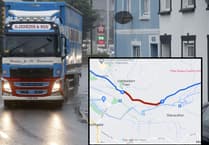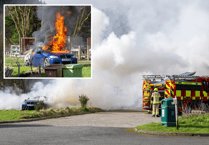Winter driving presents distinct challenges compared to other seasons. Unfavourable weather and extended periods of darkness elevate the risks on the road.
The shift of weather patterns, diminished daylight, and the heightened likelihood of fatigue, particularly during the pre and post-work commutes, unfortunately tends to result in an uptick in accidents.
Implementing even minor adjustments in our driving habits can significantly contribute to the safety of our roads.
Here, AutoAid has compiled a comprehensive set of safety tips and expert advice to help you navigate bad weather driving with confidence.
As the chilly season draws near, take proactive steps to ensure your vehicle is well-prepared.
This includes not only routine maintenance but also having reliable breakdown cover in place.
This additional layer of protection ensures that you won’t be left stranded in the cold, adding peace of mind to your winter travels.
Whether you’re a seasoned driver or new to the road, navigating through fog, snow, rain, standing water, moving floods, or scorching heat presents unique challenges.
Your vehicle’s readiness can make all the difference in ensuring your safety and comfort during these conditions
There are multiple ways to reduce the danger of driving in poor weather conditions; the most evident one is to refrain from driving unless it is absolutely essential.
However, if it becomes imperative and you have no choice but to drive, here are some autumn and winter driving tips to safeguard your well-being.
• Check tyre pressures, the oil and coolant regularly, the least desirable situation is breaking down on a dark, miserable morning/night.
• Check your windscreen washer bottle is full.
Roads tend to become damp and muddy, and splashes from other vehicles can contribute to the mess.
• The stress of time constraints can adversely impact your driving.
The more hurried you are, the likelier you are to prioritise speed over safety in reaching your destination.
Ease the situation by departing a bit earlier in the mornings and preparing in advance during the evenings.
• Maintain visibility. Ensure your windshield, side windows and mirrors are clean before you depart and at every stop.
If your visibility is limited, you cannot drive safely.
• Reduce speed, slow down to a safe and manageable speed.
This provides more time to react to unexpected situations.
Icy conditions can lead to stopping distances that are ten times longer.
Practising gentle manoeuvres and maintaining slow speeds are crucial for driving in ice and snow.
• Increase following distance, leave extra space between your vehicle and the one in front of you.
This allows more stopping distance in case of emergencies.
• Avoid sudden movements, smooth and gradual movements are key. Avoid abrupt acceleration, braking, and steering.




